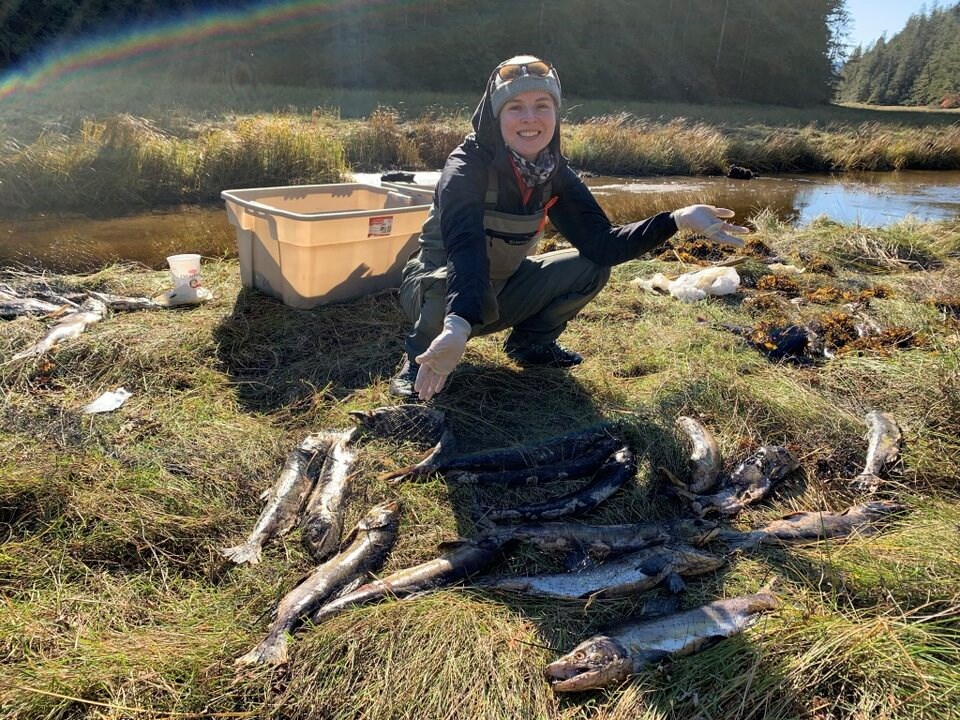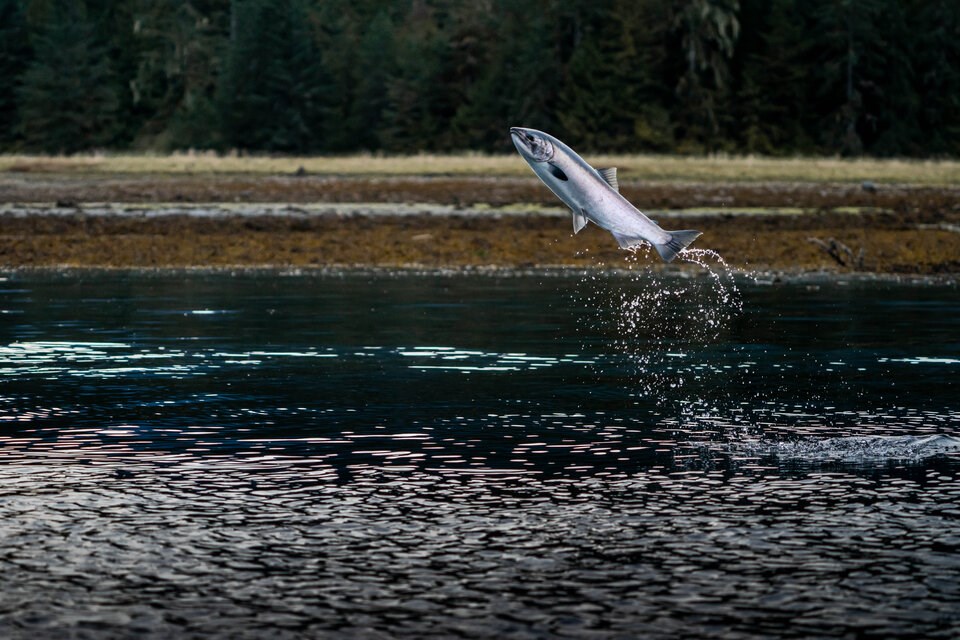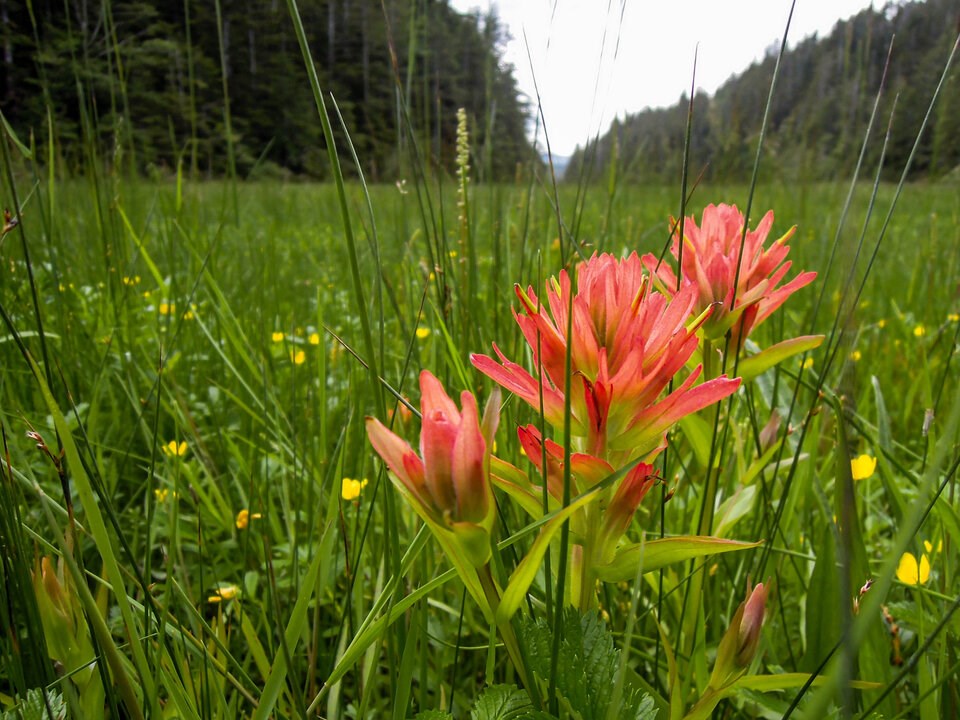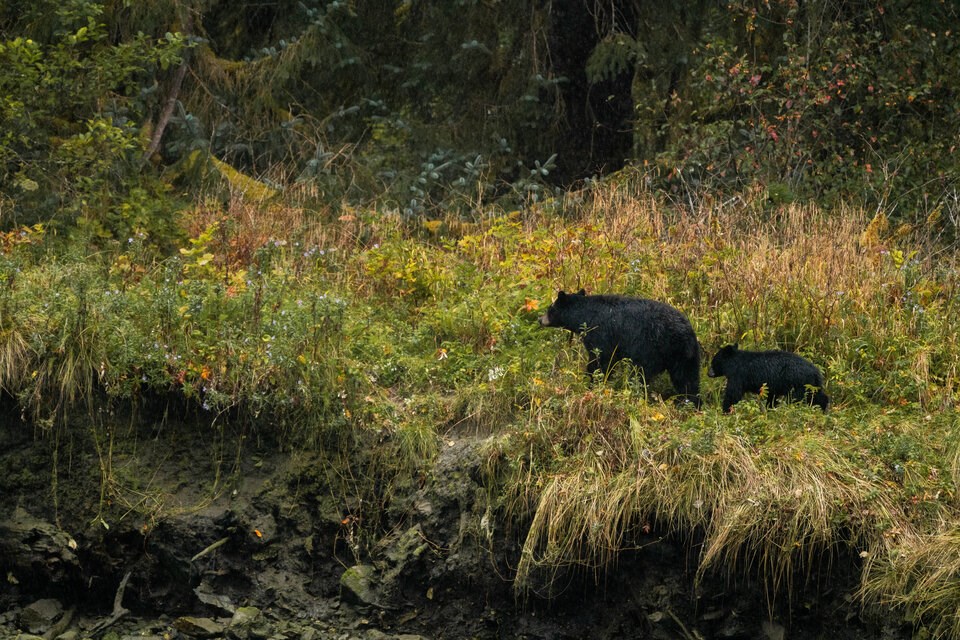A 45-minute boat ride west of Bella Bella, B.C., a small river drains out of the Great Bear Rainforest, sending water past a pea-green meadow and into the sea.
Every year, an estimated 200 salmon swim up this river to lay eggs and die. A scavenging wolf or bear might fling a carcass into the meadow; some years, flooding could deposit the dead fish among the grasses, sedges and wildflowers. But what happened next was not as clear — until now.
In a new study, published in the journal , researchers have established the first causal link showing the power salmon carcasses have in fertilizing wildflowers — the base of an ecosystem that ripples up the food chain to bees, voles and eagles.
“The flowers are growing up through the salmon,” said lead author Allison Dennert, a salmon ecologist and PhD candidate at Simon Fraser University.
Dennert says First Nations people, including the Haí色zaqv (Heiltsuk) on whose territory the river flows, have long understood that fish make good fertilizer. The idea that salmon fertilize forests has also been backed by some observational studies. But the Burnaby resident says she knows of only two other occasions when it’s been truly measured.

One also from SFU researchers dropped chum salmon carcasses on the forest floor near 11 streams on the central coast of B.C. In the end, they found plants inhabiting forest understories use nitrogen from the rotting salmon during an important growing period months after the fish were deposited.
And in 2018, researchers the results of a 20-year study that involved pitching over 200,000 sockeye salmon carcasses on one side of a river in Bristol Bay, Alaska. The researchers found trees grew faster on the side of the river where the salmon were deposited.
Dennert’s work took those experiments one step further. For four years, she and her research team pulled on waders and stepped into the stream near Bella Bella to pick up old salmon carcasses. Stuffing them into mesh bags, they would heave them onto individual plots in the nearby meadow and stake them into the ground so they wouldn’t float away in a flood.
“They’re kind of these bags of salmon skin, with frayed tails and usually a fungal infection,” said Dennert. “It was pretty smelly work.”

Some plots got fish. In others, the researchers applied rockweed, an algae that naturally blows off rocks on the shoreline. A third received both fish and rockweed, and a fourth nothing.
Every year they’d come back to collect the salmon carcasses, stuff them into the sacks and stake them to the ground. Every year, they’d measure the size of a group of common wildflowers growing in the meadow.
The nitrogen is the first to go — a “signature salmon” isotope Dennert says they can isolate as part of the fish is absorbed into the plant.
“It’s just a way to say, ‘Oh there was a salmon carcass there,’” she said. “But linking it to growth requires measurement.”

As the salmon carcasses continue to break down, calcium and magnesium are released from their bones into the soil, providing important nutrients for the surrounding plants.
Over the years, the researchers would also measure the size of the wildflowers and the number of petals they produced on each experimental plot.
By 2019, they had all the data they needed. And in the years since, Dennert and her colleagues painstakingly measured the difference in wildflower growth between the four plots.
The scientists found the land fertilized with salmon boosted the growth of two species of wildflower, yarrow and common red paintbrush, causing them to grow larger leaves. The salmon also changed how some wildflowers grew. With the common red paintbrush and the Douglas' aster, for example, the application of salmon carcasses stimulated the growth of larger flowers in most years.

“We’re talking a couple of centimetres,” Dennert said. “It’s small to the human eye but it can be a big deal to the plant trying to photosynthesize or draw pollinators.”
Scale those changes up across thousands of rivers along B.C.’s coast and the implications are sweeping, says Dennert.
“We think the land and sea are separate,” she said. “They’re really not. It’s one interconnected ecosystem.”
Dennert says she and her colleagues have documented a roughly 70 per cent decline in chum salmon returns on the river they study. And globally, the ability of predators responsible for in nearby terrestrial ecosystems has fallen to 10 per cent of what it was in the past, previous studies have found.
“You need the salmon returning to the river and you need the large animals,” said Dennert.

is banned in much of the Great Bear Rainforest. Extending that ban across the entire province of B.C. would go a long way in protecting the bears and wolves that deliver salmon from rivers to the land, the researcher said.
At the same time, she said making sure salmon reach the rivers is “pretty key right now.”
A confluence of disease, habitat destruction, over a century of overfishing, and climate change are all standing in the way of the long-term survival of Pacific wild salmon.
Dennert says while federal and provincial governments have moved to turn that tide, they also stand in their own way. By tasking federal agencies to manage salmon and provincial bodies to take care of the nearby land, she says government bureaucracy is throwing up an artificial wall between species and hampering conservation efforts.
“The first priority should be salmon for the environment, that we make sure we have enough salmon on these grounds for nature,” she said.
“That’s really what’s at risk. The whole system.”




